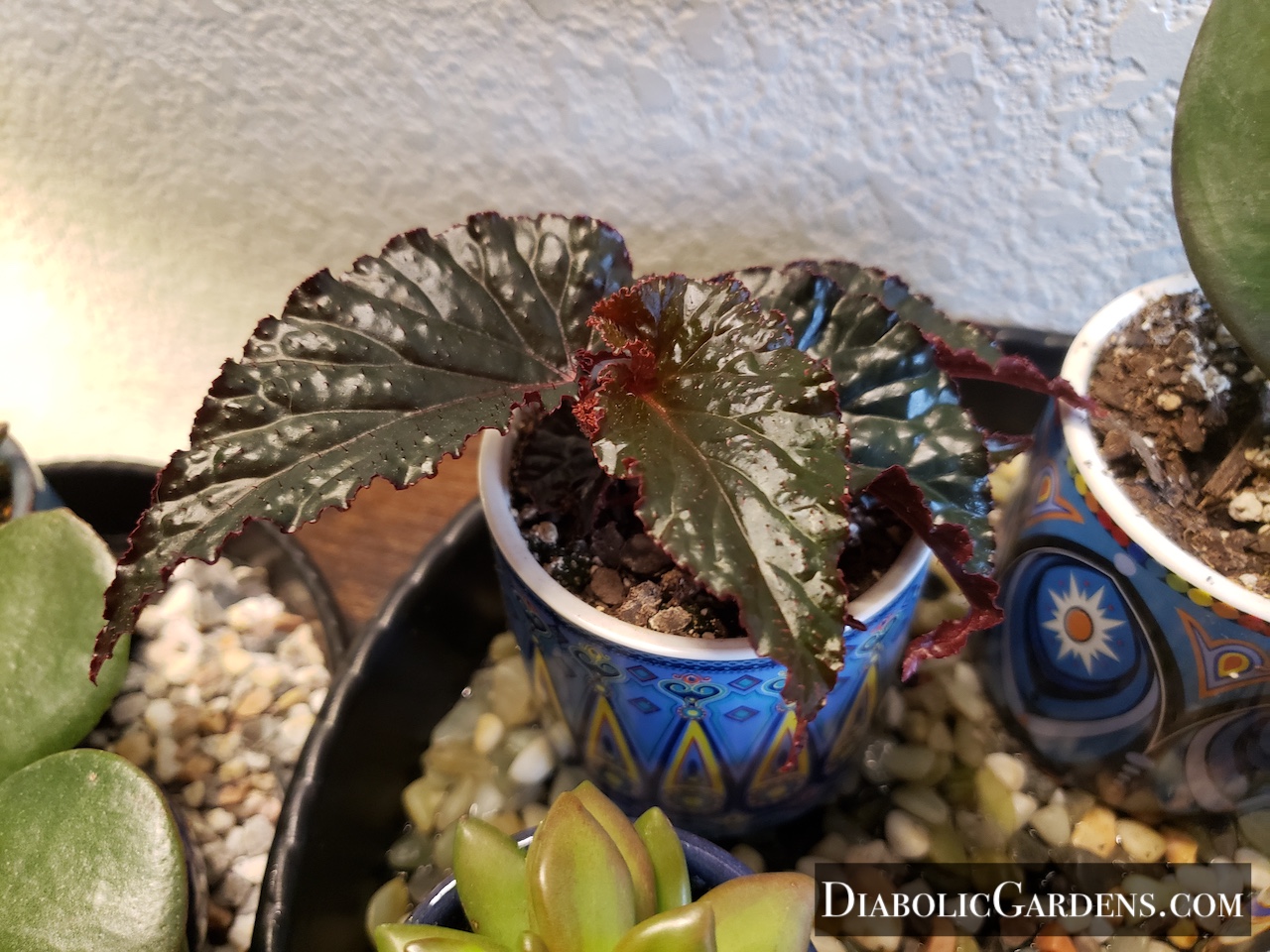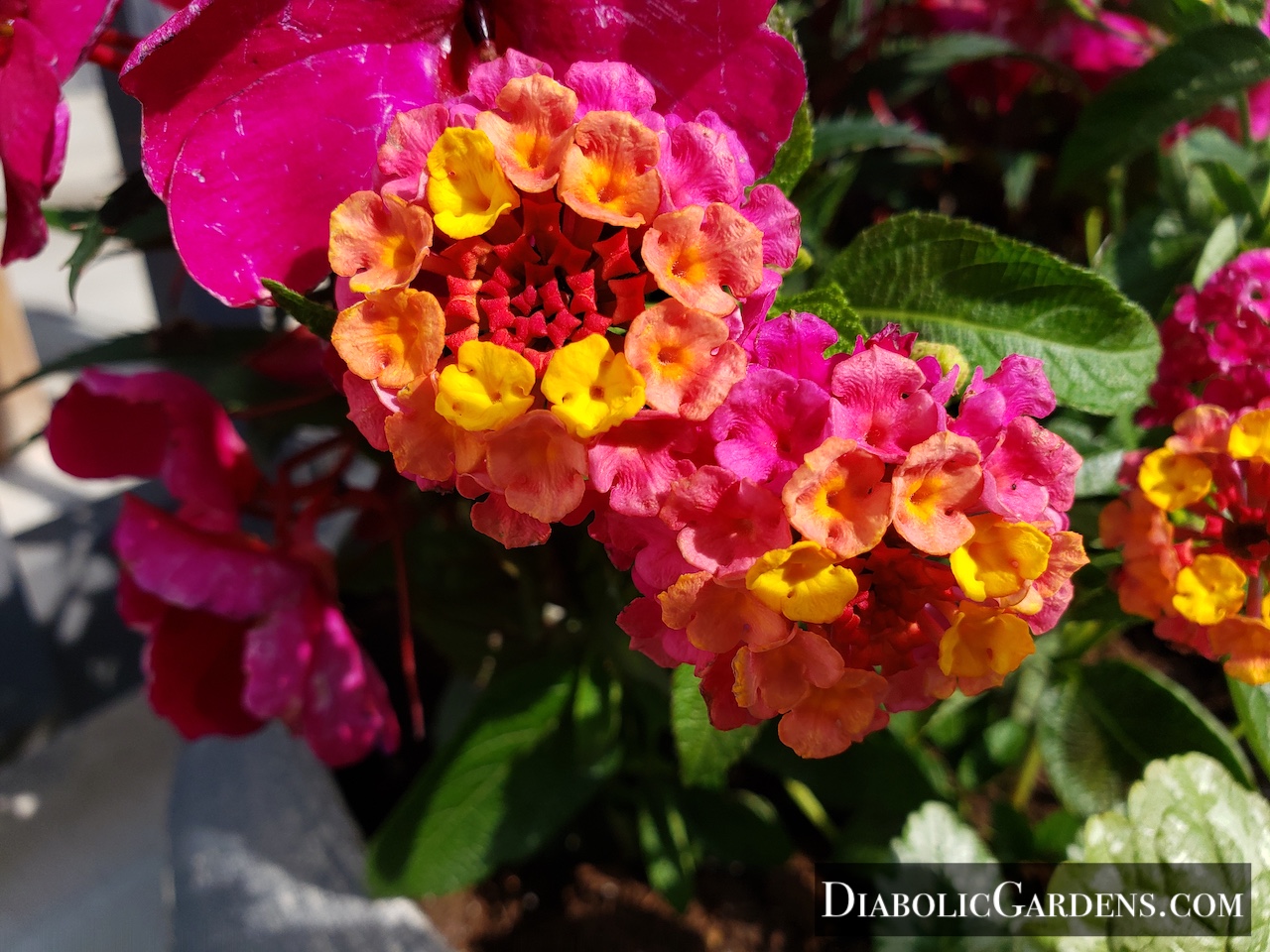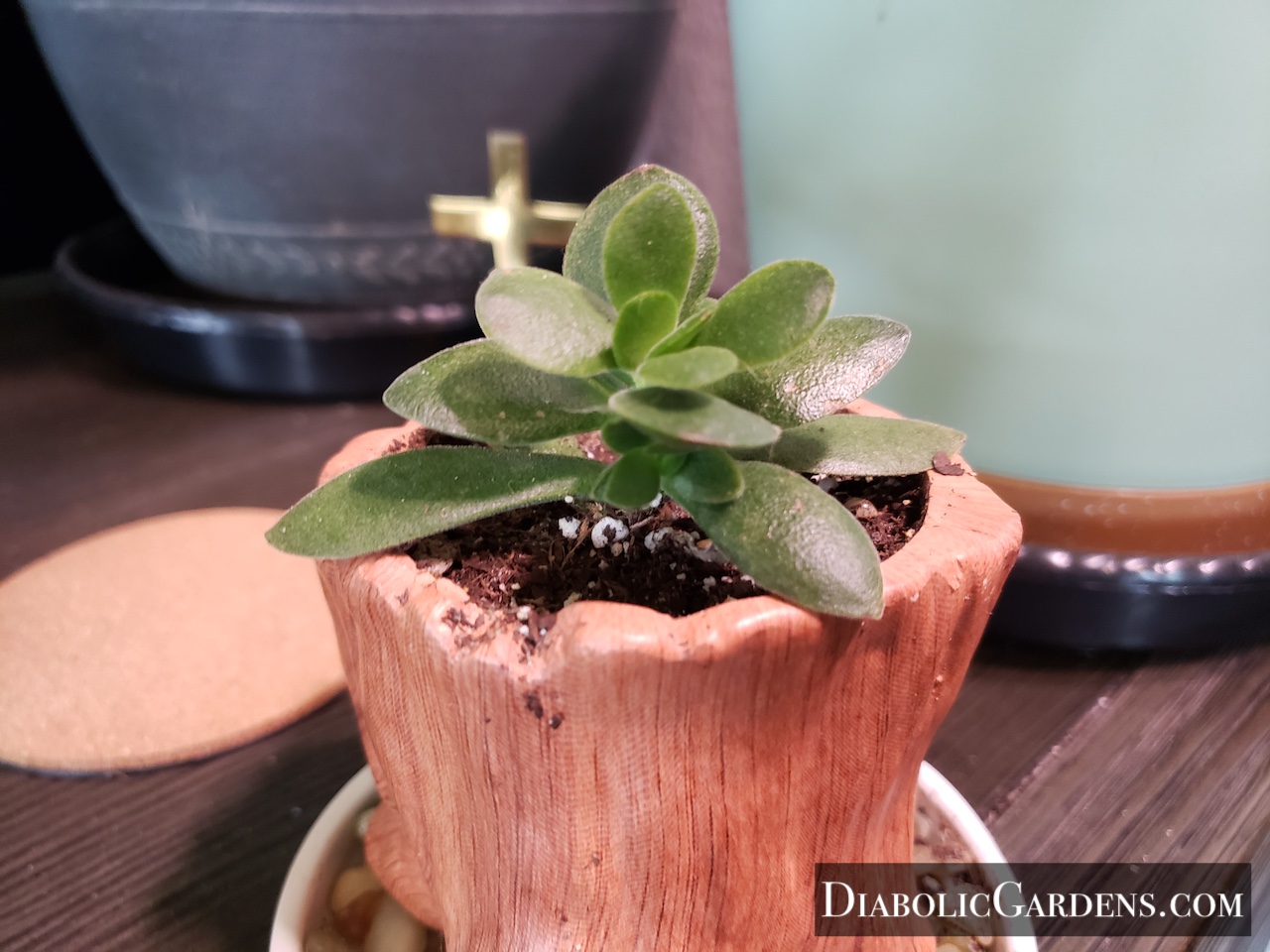Flora - Foliage
Rex Begonia 'Black Magic'
Begonia 'Black Magic' is a captivating Rex-type begonia celebrated for its dramatic and dark foliage. It is a rhizomatous begonia, meaning it grows from a thick, fleshy stem (rhizome) that creeps along the surface of the soil. The leaves are the main attraction, boasting a deep, rich color that can range from a very dark green to a glossy, near-black. The undersides of the leaves provide a stunning contrast with a deep red or burgundy hue. The leaves are asymmetrical, often described as having an "angel-wing" shape. They have a glossy, sometimes puckered or "pebbled" texture, which catches the light and adds to their visual depth.

Rex Begonia 'Black Magic'
Begonia rex-cultorum 'Black Magic'
Size:
Height and width: 12 - 18"
Toxic:
Begonias are toxic to pets if ingested.
Care:
Light:
Provide very bright, indirect, or filtered light. A spot near an east-facing window or a few feet from a south or west-facing window is ideal. Direct sun will scorch the leaves, and too little light can cause the plant to become leggy.
Water:
Water thoroughly when the top inch or two of the soil is dry. It's crucial to let it dry out slightly between waterings to prevent root rot. Avoid getting the leaves wet, as this can lead to powdery mildew and other fungal issues. Watering from the bottom is a good practice.
Humidity:
High humidity is essential. Aim for 60% or higher. To increase humidity, you can place the pot on a pebble tray with water, group it with other plants, or use a small humidifier. Misting is generally not recommended due to the risk of fungal spots on the textured leaves.
Temperature:
It prefers average to warm household temperatures between 65°F and 75°F (18°C to 24°C). Protect it from cold drafts and sudden temperature changes.
Soil:
Use a light, well-draining, and well-aerated potting mix. A mix containing peat moss, perlite, and orchid bark is a good choice.
Fertilizer:
Feed with a balanced liquid fertilizer, diluted to half-strength, every 4 weeks during the growing season (spring and summer). Reduce feeding in the fall and winter.
While grown primarily for its foliage, 'Black Magic' can produce small, delicate clusters of pink or white flowers, usually during the winter or spring.

7/19/25

